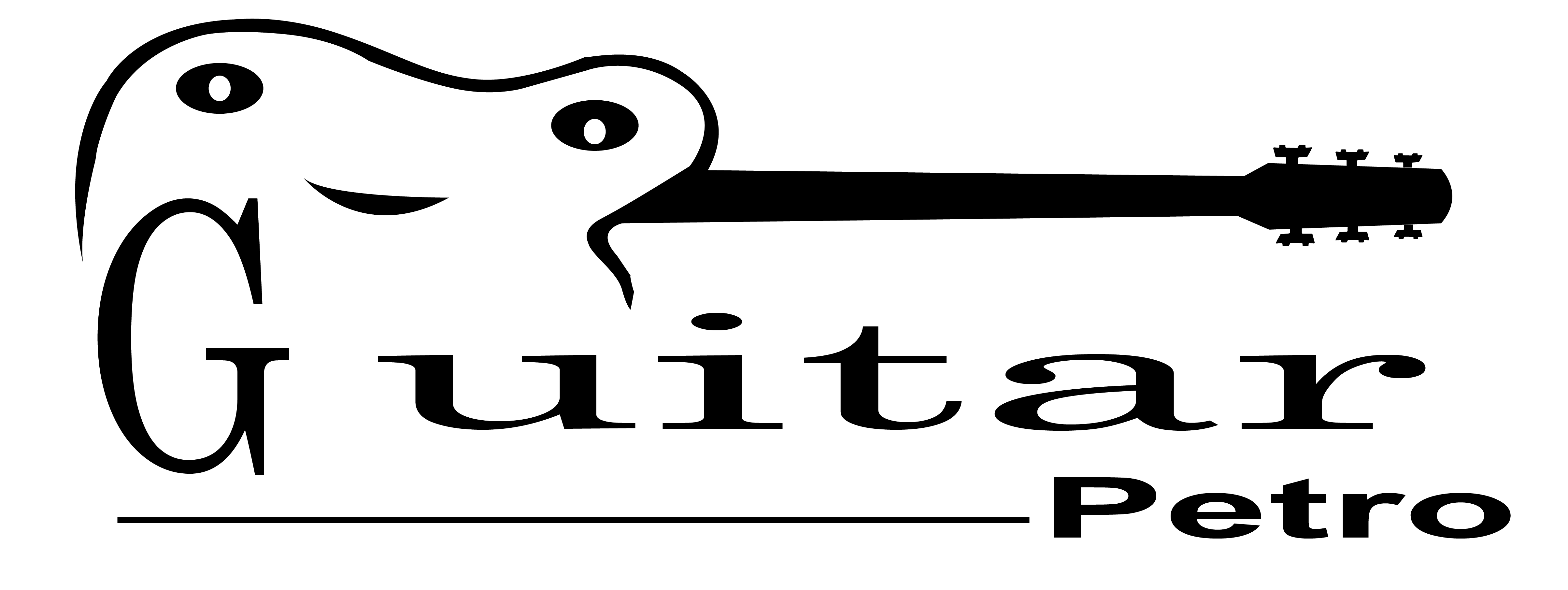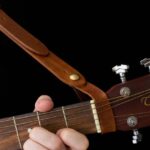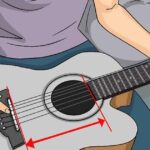In the world of music, the desire to create a sense of belonging and connection often drives musicians to explore different sounds and tones. For guitarists, this can involve experimenting with various techniques to achieve an acoustic-like resonance from their electric guitars.
While the distinctive sound of an acoustic guitar is typically achieved through the natural amplification of its hollow body, there are methods to replicate this timbre on an electric guitar. This guide aims to provide guitar enthusiasts with a professional approach to transforming their electric guitar into an acoustic-like instrument.
By delving into the realm of amp settings, acoustic simulator pedals, guitar adjustments, string changes, and the use of acoustic simulator effects, guitarists will gain valuable insights into creating an authentic acoustic sound. We will explore the differences between acoustic simulators and real acoustic guitars, recommend the best acoustic simulator pedals, and highlight the availability of acoustic simulator plugin software.
Key Takeaways
- Adjusting the tone controls on the amp and experimenting with different settings can help emulate acoustic resonance.
- Using an acoustic simulator pedal can transform the electric guitar sound into a convincing acoustic tone.
- Pickup selection and adjusting the guitar setup can greatly affect the tone and resonance of the electric guitar.
- Acoustic simulator pedals or software can provide convenience and versatility in achieving an authentic acoustic sound.
Amp Settings
To achieve a more acoustic sound with an electric guitar, it is imperative to carefully adjust the amp settings. This is a task that should be done regularly and with great attention to detail. By manipulating the various controls and effects on the amplifier, you can create a sound that mimics the warm tones of an acoustic guitar.
One of the key factors to consider is the frequencies that your electric guitar produces. By adjusting the tone controls and experimenting with different settings, you can find the perfect balance that emulates the natural resonance of an acoustic instrument. Using an effects pedal designed specifically to simulate acoustic sounds can further enhance the authenticity of your electric guitar’s sound.
Remember to also pay attention to the speakers and their placement, as they play a crucial role in producing the desired acoustic sound. By fine-tuning the amp settings, you can transform your electric guitar into an instrument that resonates with the rich tones of an acoustic guitar, making your playing and recordings truly exceptional.
Acoustic Simulator Pedal

Can an acoustic simulator pedal help achieve a more authentic acoustic sound with an electric guitar? Absolutely. An acoustic simulator pedal is a powerful tool that can transform the electric guitar sound into a convincing acoustic tone. This pedal works by manipulating the guitar signal to emulate the characteristics of an acoustic guitar.
It takes into account factors like guitar pickups, playing style, and resonance to recreate the warm and natural sound of an acoustic instrument. By using an acoustic simulator pedal, electric guitar players can enjoy the rich and organic tones of acoustic guitar sounds without the need for a separate acoustic-electric guitar.
This pedal is especially useful when combined with other guitar pedals and can be used in conjunction with different guitar settings to further enhance the acoustic experience. Now, let’s move on to discuss the importance of guitar settings in achieving an acoustic sound.
Guitar Settings
The guitar settings play a crucial role in achieving an authentic acoustic sound with an electric guitar. To achieve the desired acoustic guitar sound, it is important to adjust various settings on your electric guitar. One of the most important settings to consider is the pickup selection. Many electric guitars have multiple pickups, and choosing the right one can greatly affect the tone.
Adjusting the bridge of your electric guitar can help emulate the resonance and sustain of an acoustic guitar.Activate built-in acoustic guitar emulations on certain electric guitars to enhance their acoustic sound. Alternatively, you can use acoustic simulator pedals or effects to achieve a similar result.
By experimenting with these acoustic guitar settings, you can create a tone that closely resembles an acoustic guitar. Transitioning into the subsequent section about ‘string change’, changing the strings on your electric guitar is another important aspect in achieving an authentic acoustic sound.
String Change
Changing the strings on your electric guitar is an essential step in achieving an authentic acoustic sound. By using acoustic strings, you can enhance the resonance and tonal characteristics of your guitar. Here are some tips to guide you through the string change process:
- Choose acoustic strings specifically designed for electric guitars. These strings aim to emulate the warm, vibrant tone of an acoustic guitar, providing a similar experience.
- Consider adjusting your guitar’s setup to accommodate the thicker strings. This will help prevent buzzing and ensure optimal playability.
- Experiment with different string gauges to achieve the desired brightness and sustain. Thicker strings generally produce a fuller and brighter tone.
- If your electric guitar has a magnetic pickup, consider using an acoustic simulator pedal or an acoustic guitar amp. These devices can help replicate the sound of an acoustic guitar more accurately.
- If your electric guitar has a sound hole or sound hole pickups, the acoustic sound will be more authentic. Keep in mind that using these pickups may require additional adjustments in your guitar’s setup.
- Avoid using excessive distortion effects, as they can result in distorted sounds that do not resemble an acoustic guitar. Instead, consider using a piezo pickup, which can capture the natural acoustic sound more accurately.
Acoustic Simulator Effect

To achieve an acoustic-like sound on your electric guitar, incorporate the acoustic simulator effect into your setup. The acoustic simulator effect is a pedal or processor that modifies the electric guitar sound to mimic the characteristics of an acoustic guitar. It works by adding resonance, warmth, and natural acoustic tones to the electric guitar signal.
This effect is perfect for players who want to create a hybrid guitar sound, combining the best of both worlds. With the acoustic simulator effect, semi-acoustic guitars or semi-hollow guitars can sound even closer to a real acoustic guitar. By using an acoustic preamp or acoustic preamp pedals, you can further enhance the electric guitar sound and achieve a more authentic acoustic tone.
The acoustic simulator effect is also useful for acoustic recording or playing live when you want to emulate an acoustic guitar sound without the need for electronics. Now, let’s explore the difference between the acoustic simulator and a real acoustic guitar.
Acoustic Simulator Vs Real Acoustic
When comparing an acoustic simulator to a real acoustic guitar, it becomes evident that there are distinct differences in sound and playability. Here are a few points to consider:
- Sound: While an acoustic simulator can mimic the sound of an acoustic guitar to some extent, it may lack the warmth, resonance, and natural harmonics produced by a real acoustic guitar. The authentic tones and nuances of an acoustic guitar are hard to replicate.
- Playability: Real acoustic guitars offer a different feel and experience compared to electric guitars with acoustic simulator effects. The weight, size, and string tension of an acoustic guitar contribute to its unique playability, which an electric guitar with an acoustic simulator may not fully capture.
Overall, while an acoustic simulator can provide a reasonable approximation of an acoustic guitar sound, it cannot completely replicate the experience of playing a real acoustic guitar. It’s worth considering factors such as guitar setup costs, visiting a guitar shop, or learning guitar tricks to enhance the regular guitar sound, before deciding between an acoustic simulator and a traditional acoustic guitar. If you still prefer the convenience and versatility of an electric guitar, using an acoustic simulator can be a suitable alternative.
Now, let’s delve into the next section and explore the best acoustic simulator pedals available in the market.
Best Acoustic Simulator Pedals
Acoustic simulator pedals are commonly used by guitarists to intermittently achieve an acoustic-like sound while playing an electric guitar. These pedals are a popular choice for electric guitar players who want to add versatility to their sound without investing in a separate acoustic guitar.
An acoustic simulator pedal works by altering the electric guitar signal to mimic the resonance and tone of an acoustic guitar. It can be connected to an acoustic guitar amplifier or directly into a PA system for live performances. Some acoustic simulator pedals also offer additional features such as built-in effects and EQ controls, allowing guitarists to further shape their sound.
Whether you’re looking to add some acoustic flavor to your solos or explore a different type of guitar sound, an acoustic simulator pedal can be a valuable tool for any electric guitar player. Some popular options include the Boss AC-3 Acoustic Simulator and the TC Electronic Mimiq Doubler, which offers a wireless MIDI option for even more flexibility in your performances.
Acoustic Simulator Plugin Software

One commonly used option to achieve an acoustic-like sound on an electric guitar is through the use of acoustic simulator plugin software. This software emulates the resonance and tone of an acoustic guitar, allowing the electric guitar to produce a more natural and warm sound. Here are some key features and benefits of using acoustic simulator plugin software:
- Versatility: Acoustic simulator plugins can be used with any electric guitar, regardless of its make or model.
- Signal Chain Integration: The software can be easily integrated into your existing signal chain, allowing you to control the acoustic simulation along with other effects.
- Pickup Selection: You can choose different types of pickups, such as a neck humbucker or a bridge pickup, to achieve the desired acoustic tone.
- Clean Tone Enhancement: Acoustic simulator plugins can enhance the clean tone of your electric guitar, making it sound more like a hollow body acoustic guitar.
- Realistic Sound: The software accurately replicates the resonance, body, and string characteristics of an acoustic guitar, giving your electric guitar a convincing acoustic sound.
FAQ’s
Can an Electric Guitar Sound Acoustic Without Using an Amp or Pedal?
An electric guitar can sound acoustic without the use of an amp or pedal by employing certain techniques such as fingerpicking, adjusting the tone and volume controls, and using lighter gauge strings.
Are There Any Specific Techniques to Make an Electric Guitar Sound More Like an Acoustic?
To achieve a more acoustic sound with an electric guitar, there are several techniques that can be employed, such as using lighter gauge strings, adjusting the pickup height, and experimenting with different playing techniques like fingerpicking.
How Often Should I Change the Strings on My Electric Guitar to Maintain an Acoustic-Like Sound?
To maintain an acoustic-like sound on your electric guitar, it is recommended to change the strings regularly. The frequency of string changes depends on factors such as playing style, frequency of use, and personal preference. Regular string changes will help maintain the desired sound quality.
Can an Acoustic Simulator Pedal Be Used With Any Type of Electric Guitar?
Players can achieve the rich, resonant tones of an acoustic instrument by using an acoustic simulator pedal with any type of electric guitar. This versatile tool adds depth and warmth to the electric guitar’s sound, expanding its sonic possibilities.
What Are the Advantages and Disadvantages of Using an Acoustic Simulator Pedal Compared to a Real Acoustic Guitar?
Using an acoustic simulator pedal to make an electric guitar sound acoustic offers advantages such as versatility, control over tone, and convenience. It may lack the authentic sound and feel of a real acoustic guitar.
Conclusion
In conclusion, transforming an electric guitar’s sound to resemble that of an acoustic guitar involves various techniques such as adjusting amp settings, using an acoustic simulator pedal, altering guitar settings, and changing strings. While an acoustic simulator effect can mimic the acoustic guitar sound to some extent, it cannot fully replicate the resonance and authenticity of a real acoustic guitar.




